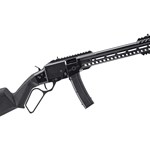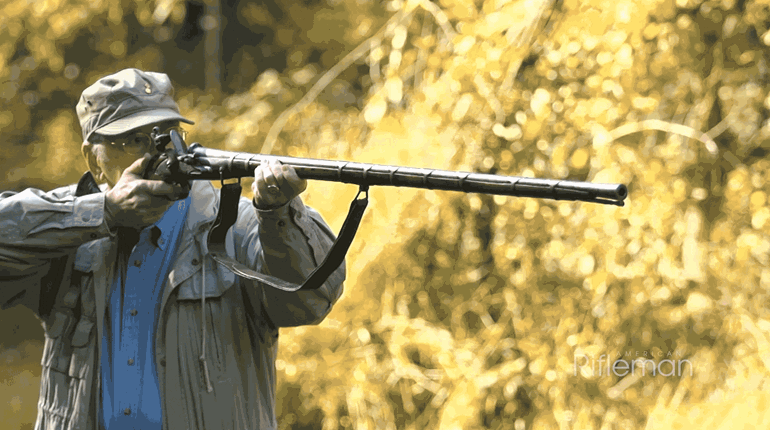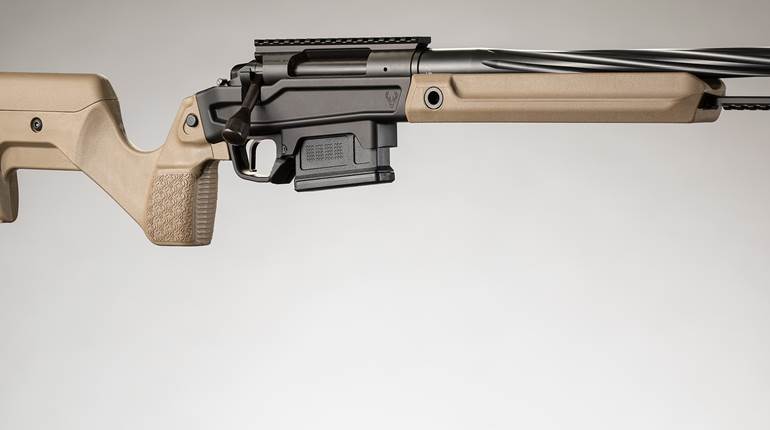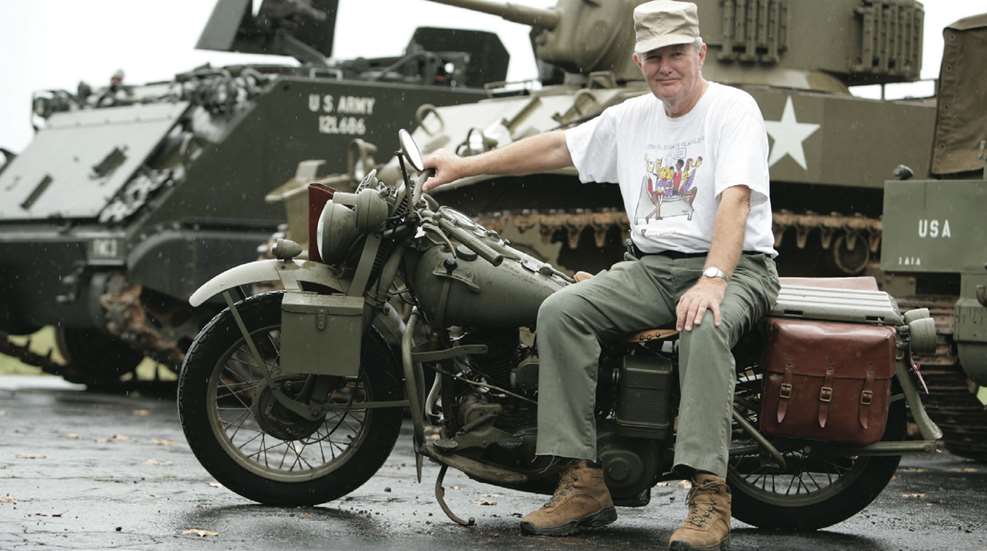
Publisher’s Note: The following interview with Mr. Allan Cors, the new President of the NRA, was conducted in late 2014. As you will read, Allan has been around guns most of his life, and still has his first Daisy BB gun! 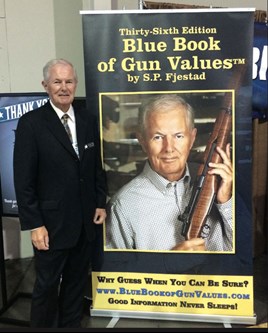
Q: Where did you grow up, and can you remember your first involvement with firearms?
A: I was born in and spent the first 25 years of my life in Cincinnati, Ohio. I had wonderful parents who supported everything I did, from athletics to hunting, fishing, and shooting. I started out with a Daisy Red Ryder BB gun, then moved up to a Daisy pump gun. I’ve had a lot of different guns over the years, but I still have that Daisy, and it still works.
Q: When and how did you initially get involved with the NRA?
A: I first became a part of the NRA family as a Cub Scout. Our Cub Scout leader was a World War II vet who thought competitive shooting was important. There was a rifle range in the basement of a church right down the street from the church I went to. That’s where I got involved with competitive shooting at about age 11. That continued as I grew older – even though I couldn’t drive yet, there were members of a gun club who would pick me up and take me to the gun club to shoot.
Q: Did you do a lot of hunting when you were younger, and if so, are you hunting as much today as you used to?
A: The men who introduced me to competitive shooting in my early teens also introduced me to hunting. Two of them were avid rabbit hunters, and every Saturday during hunting season they’d drive down into the hills of Kentucky, and they took me along. A family friend lent me a single shot shotgun with a 30 in. full choke barrel, which was not ideal for rabbit hunting. But I’d hunt rabbits after school and on Saturdays, and I got a lot of rabbits with it.
When I was about 16, I bought my first shotgun, which I still have: a Winchester Model 12 Skeet Grade pump gun with a factory-installed Cutts Compensator on it. I used that gun for many years for everything – from upland game to geese and ducks. I laugh about it today. Because it was my first gun, with gorgeous checkering and a beautiful blued finish, I was very protective of it. When I’d go to the duck blind, where usually we’d have foul weather, I’d often put a plastic bag over it, and when the birds started to decoy in, I’d rip off the plastic bag and shoot. I got a lot of ribbing about it, but today that gun is still in pristine condition.
While in college, I met a man who ran a hunting and fishing guide service in Wyoming. We didn’t start classes at the University of Cincinnati until late September, so fortunately, I was able to go hunting with him as a “dude,” or guest, when I was 19 or 20. We got along so well that they invited me back for a couple of years after that to work as part of the guiding team. It was a great experience.
Today, I don’t hunt as often as I used to, or would like to, but I’ve hunted deer in many states, caribou in Canada, and elk and antelope in Wyoming and Montana. I’ve hunted in South Africa, Argentina, and elsewhere.
Bird shooting, now, is a favorite.
Q: I know you’ve been a gun collector for many years. How did you get started collecting firearms and what influenced you initially to focus on those specific makes/models?
A: I’ve been interested in military history since I was a kid, and I wanted to understand the firearms that were used in making military history. In the early days, I couldn’t afford the antiques, but I could afford things like M1 rifles and 1903 Springfields and M1 carbines. So I started collecting military long arms, and that’s been the focus of my collection ever since. Now it’s been expanded to everything from the mid-1700s to the present.
Q: What are your favorite guns in your collection, and do you have any interesting stories about how they were purchased or the provenance behind some of them?
A: Probably the most interesting story is how I acquired John Garand’s own M1 Rifle. In 1942, Springfield Armory produced the M1 Rifle, serial number 1,000,000. It was placed in the Armory’s museum. When John Garand retired from government service at Springfield Armory in 1953, the Army took that rifle out of the museum and presented it to him. After he passed away in 1974, the rifle remained in his family’s possession. About 12 years ago, his family decided to sell the rifle, but they didn't want to sell it to just anyone.They wanted to interview the person who was going to buy the rifle. So I met with the family and their intermediary broker. I had dinner with them, and the next morning they agreed to sell the rifle to me.
I found out later that my bid for the rifle was not the highest offer they had received. The family was concerned about where the rifle went. They valued it not just in terms of its monetary value but also its historical value and what it said about John Garand. So I’m delighted that they entrusted the rifle to me as its temporary custodian – the role of all serious collectors.
That rifle is now on loan to the NRA National Firearms Museum where Americans can see it and appreciate its major historical significance in a way that honors the family’s wishes.
Q: How do you determine what your next gun purchase might be?
A: The truth is, I’m trying to stop. I’m trying to thin out my collection. I’ve enjoyed owning and shooting for many years, and now I’m at the stage of my life where I’m happy to share them with others, whether that means giving them to a museum or passing them on to other collectors. 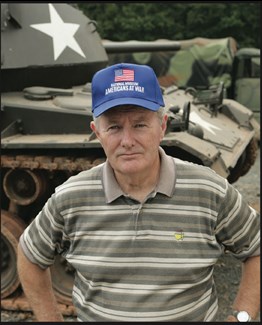
Q: Of some interest to the readers might be your tank collection – how did you ever get involved with collecting tanks, and how/where do you display them?
A: In 1982, I decided I wanted to own one military vehicle, so I bought a Ford-produced World War II Jeep. That was the beginning. After that came a WWII weapons carrier, a WWII Dodge command car, a GMC 2-1/2 ton truck – and then in 1985, I bought the first tank, an M5A1 Stuart tank. That really got the ball rolling. By 1989, I’d filled a warehouse in Crystal City, Virginia, and a barn in Warrenton, Virginia, then bought what I call the “tank farm”’ and hired the first full-time staffer to run the operation.
Around 1992, some friends said they’d like to see the tanks run, so about 75 folks came to ride in and drive some of the vehicles. I did that twice a year. Soon we had speakers at these open houses, people who’d served in the tanks during wartime, and very quickly my interest shifted from the vehicles to the soldiers who trained and fought in them and the experiences they had doing so. Their stories really got my attention.
Q: Can you tell us a bit more about the National Museum of Americans in Wartime, to be located in Virginia, and why you founded it?
A: Hearing those veterans speak at the open houses on my tank farm made me realize it’s not about tanks or airplanes or battles or campaigns – it’s about the stories of the men and women in uniform, the families who waited for them at home, and the values they demonstrated in serving their country: integrity, loyalty, commitment, courage, sacrifice, leadership. Less than 1 percent of our population ever serves in the military, but I think those values apply to all of us in our everyday civilian lives, in our family relationships, our churches and synagogues, and our communities.
I want to help tell those stories – and promote the values they exemplify for future generations – through the National Museum of Americans in Wartime. We’re still in the fundraising stage, but at this point we’ve raised about $33 million in pledges and assets toward the $100 million project. We’ll have a facility on a 70-acre site off I-95 about 20 miles south of Washington, D.C., with a recording studio in the museum to capture the stories of the veterans who have served. In the meantime, we have a mobile recording studio in a 37-foot RV that we’re taking up and down the east coast to gather and preserve the stories of these vets for posterity. Take a look at AmericansInWartime.org
Q: Can you tell us about your life-long interest in competitive high-power rifle shooting and the Camp Perry National Matches? 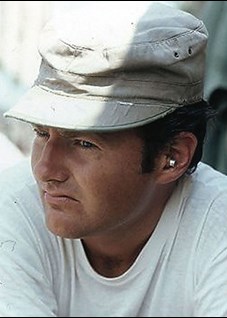
A: Shortly after my wife and I married, I got an invitation to work in Washington as a lawyer for the Judiciary Committee in the U.S. House of Representatives. Eventually it got to where I was working way too much, and I decided I needed some activity to do on my own away from work. I was already a gun collector at that point, and I looked in my closet and saw a number of beautiful M1 Garand rifles, and realized that although I knew how to fire them, I wasn’t particularly good at it. So I decided I wanted to learn to shoot an M1 rifle, and do it well.
So I started shooting M1s with the Virginia State High Power Rifle Team, and within one year I became a Distinguished Rifleman under the DCM program. That launched what would become 35 years of competition with the Virginia State High Power Rifle Team, primarily in the Service Rifle category, shooting ‘across the course’ at 200, 300, and 600 yards.
My favorite event was the National Infantry Trophy Team Match, or “rattle battle,” as it is called. Here, you have six shooters shooting simultaneously at eight different targets with a 50-second time limit, and you shoot as many shots into the targets as you can at 600, 500, and 300 yards. Hits at the longer ranges count for more points than hits at the shorter ranges.
Service Rifle shooting has been really a big part of my life. I’ve enjoyed it immensely. Happily, we did win numerous national civilian championships over those years, but that’s bragging a little bit.
Q: You are obviously very passionate about firearms and firearms ownership. As the new President of the NRA, what’s going to be on your agenda during the next two years?
A: In simple terms, I want to focus on money, members, and management. We have a fabulous staff that is doing a great job. We have some huge challenges in the years ahead, and I want to do what I can, as part of the NRA team, to ensure the organization runs as smoothly and as effectively as possible.
One of the things I’m particularly interested in is to see the NRA’s shooting activities expanded as much as possible to get more people pulling triggers, whether it's air rifles, handguns, shotguns, or rifles used and enjoyed in competition, hunting, self-defense, and gun collecting. Getting more people engaged in the shooting sports is the key to securing our future. More shooters and gun owners will give us the exposure and the popular support that we need to thrive and prosper.
I have a 100-yard shooting range at the tank farm, and I really enjoy taking people out there to shoot. With only one exception, I’ve never had any new shooter there who didn’t come away from the experience with a big smile on their face saying, “This is fun,” or “I want to do this again,” or “I think I’d like to buy a gun.”
We need to get more people pulling triggers, and to do that, I think we at the NRA need to come up with more innovative shooting programs that will attract people who aren’t finding what they want among our current disciplines. Not everyone can afford the time and expense of High Power or Smallbore competition, for example. So we need to develop more shooting games that don’t require the large investment of time and money that some of the more traditional disciplines require.
There’s plenty of room for growth in the shooting sports, and I want to see the NRA lead the way.
Q: What do you think the biggest challenges will be for the NRA in the future?
A: I think the Second Amendment right to keep and bear arms is, and must always remain, our number-one mission and mandate. Former NRA President Charlton Heston called the Second Amendment “America’s first freedom” because, as he put it, “it is the one right that allows ‘rights’ to exist at all.”
That makes the Second Amendment uniquely precious to people who cherish freedom – and profoundly threatening to those who seek to take Americans’ freedoms away. As a result, the schemes and strategies they use to try to erode that freedom are constantly changing.
As we saw on Election Day, 2014, when Washington State voters approved Initiative I-594 – which makes it a crime for you to lend or borrow a firearm from someone else, even for five minutes at a shooting range, without a background check – the ballot initiative process is a new and effective way for the gun-ban lobby to bypass state legislatures and impose their agenda through carefully-crafted referendums.
So we’re going to have our work cut out for us in the years ahead. But what gives me great faith and optimism for the future is the passion, and the sense of a shared higher purpose, that so many NRA members and gun owners across America demonstrate when these kinds of attacks on their freedoms arise. I don’t think there’s anything like it in the history of the world. American gun owners most emphatically get it; The Second Amendment right to keep and bear arms is the first birthright and last guarantee of American freedom in all its forms. And Americans don’t give it up without a fight.
Q: You have been a major leader in developing philanthropic giving to the NRA and served as president and trustee of The NRA Foundation. What role do you see this playing in the NRA’s future? 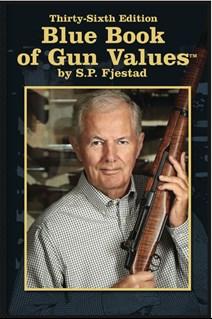
A: We’ve got a big job to do, we’ve got a lot of people to reach, we’ve got an expanding constituency to service, whether it’s women or young people or the growing ranks of first- time gun owners, and all of that is going to cost a lot of money.
My vision of the NRA family’s financial future is that there’s a river of gold that’s flowing by. I’m talking about the assets of our members and supporters who live their lives and pass on. The question is, are we dipping into that stream of gold with a teaspoon, or are we dipping into it with a 55-gallon drum? I believe that across this country, there’s a vast reservoir of passion and belief in our cause among our millions of members and supporters, and that many of them will share their financial good fortune with the NRA, if only we would ask.
So the bottom line is that we need to ask effectively. We need to make the case to our family members as to why they should invest in the future of this cause, and how they and the generations to come can benefit from doing so.
The NRA Foundation is a key part of that effort. Tax deductible giving, today, in support of our educational programs is critically important, and planned giving is really, really important. It is the very core of our endowment for the future needs of the NRA.
Q: Other than voting and belonging to the NRA, what do you feel is the most important thing ordinary gun owners can do to preserve gun ownership?
A: Act like a member of the family. Embrace other members of the family, particularly new members of the family – new shooters, new gun owners, new classes of competitors.
Whether it’s hunting or competitive shooting or gun collecting, when you introduce someone new to the activities we enjoy, you’re giving firearms and the freedom to own them a new ally, shareholder, and believer. That helps the NRA, but more importantly, it secures the freedoms the NRA fights for.
Since an early age, I’ve regarded the NRA as part of my family. The men who first got me involved with competitive shooting and hunting were part of that same family. We’re all part of the culture of freedom. More and more, our country is experiencing a conflict between the culture of freedom that we’ve enjoyed since the founding of this country... and the counterculture of those who espouse a statist, heavily government-controlled antithesis of our freedom culture. So I see the NRA very much as part of my family, not just in terms of the activities we enjoy, but also in terms of what’s going on in our culture.
If you care about America’s culture of freedom, if you want to preserve it for future Americans, you belong in the NRA because whether or not you realize it, you’re already part of that family. And the family needs your help to protect the cultural heritage we all hold dear.
Q: What do you think are the best channels of communication between gun collectors and the NRA, and how can they best help each other out?
A: I suspect a lot of gun collectors simply don’t realize how much the NRA does to protect their interests, but I also think that’s changing for the better today with some of the recent legislative and regulatory actions that have been attempted. As a result, I think gun collectors are beginning to see how important the NRA’s efforts are on their behalf, and that’s a positive development both for gun collectors and for the NRA.
When I started collecting, it was easy for a young collector with limited resources to get into the hobby because there were a lot of military surplus guns – Springfield rifles, M1 Garands, M1 carbines and so on – that were well within their budgets. Now that’s changing, because most of those guns have been bought up, new imports of those guns have slowed to a trickle, and a lot of other imports have seen increasing restrictions, as well.
The ivory issue is another area where collectors are seeing how important it is to have the strength of the NRA behind them. As you know, recent attempts by U.S. regulators to shut down the trade in ivory could make many firearms worthless if not contraband subject to confiscation. The NRA’s efforts to protect lawfully-owned ivory have made many collectors into big NRA supporters.
It’s almost a two-way street. When collectors know how much they benefit from what the NRA does, they join us. And when they do, their support and input allow us to address their concerns even better. 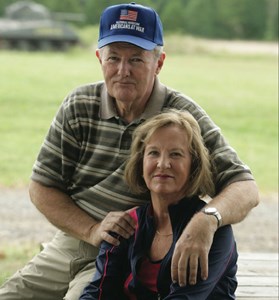
NRA’s outreach to hunters I think is a great illustration of that. For a long time, hunters simply didn’t know about all the NRA does, day-in and day-out, to protect their interests and preserve their outdoor traditions. But by reaching out to hunters to tell them what we’re doing on their behalf, the NRA can not only bring more of them into the NRA family as members, but also expand our efforts on their behalf as a result of that increased support. That’s what we’re doing now, and it’s really resonating with a lot of American hunters.
Q: How do you see the firearms industry evolving in the 21st century? Certainly, the last seven years will be remembered as the rise and collapse for the demand of the AR-15 or Modern Sporting Rifle (MSR), and ammunition.
A: Like any business, the firearms industry will go through periods of growth, plateau, or retreat. Certainly we’ve seen that in recent years with the boom in sales of AR-15s, followed by the decline from those high levels. We have some really good people in the business of making firearms and ammunition these days, from both the established manufacturers, as well as the many newcomers, making some wonderful products. So the future looks bright.
If we are successful in preserving our culture of freedom, I am confident that demand will remain strong and our family members will continue to have access to outstanding firearms and related products.









